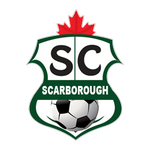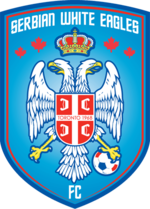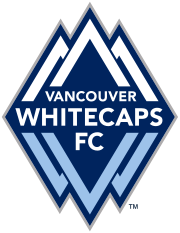Canadian Soccer Teams: Complete Guide to CPL, and League 1 Teams (2025)
Canadian soccer is currently experiencing an unprecedented rise in terms of popularity. Often overshadowed by hockey, football is slowly building a passionate fan base in the nation. Canada’s presence on the global footballing stage has also been growing, with the country producing world-class talents like Alphonso Davies and Jonathan David. The recent World Cup qualifications have been a positive for the nation, and with the country set to co-host the 2026 World Cup, the future looks bright.
This growth has been mainly contributed to by the well-structured league system, which has helped produce youth talents and increase domestic competition. At the highest tier, Canada is represented in the USA’s top-flight division, Major League Soccer (MLS), by three clubs - Toronto FC, CF Montréal, and Vancouver Whitecaps FC. At the national level, the highest division is the Canadian Super League (CSL), which aims to nurture the upcoming footballing talents in the country. Below CPL lies the League1 Canada, comprising League1 Ontario (L1O), Ligue1 Québec (PLSQ), and League1 British Columbia (L1BC). These semi-professional leagues help develop young talent within the country. In addition to this, leagues like the Pacific Coast Super League (PCSL) and various other regional competitions have helped in the overall improvement of footballing quality in Canada.
Canadian Soccer Clubs: History and Evolution of Soccer Teams in Canada
Soccer in Canada dates back to the 1800s, initially introduced by British immigrants, who brought the game to the country with them. The first football match in the country was played in Toronto in 1876, and the sport eventually gained popularity in Toronto and Vancouver. By the early 20th century, various amateur leagues and competitions came up in the country, paving for future growth. However, the sport failed to leave an impression in the late 20th century. While Canadian soccer teams like Toronto Blizzard and Vancouver Whitecaps had brief stints in the North American Soccer League (NASL) during the 1970s and 1980s, they didn’t contribute much as the league collapsed in 1984.
A new era began with the inclusion of Canadian soccer clubs in Major League Soccer (MLS). Toronto FC joined in 2007, followed by Vancouver Whitecaps FC and CF Montréal. This helps to reignite the long-lost love for the sport. However, the lack of a domestic league remained a problem. This changed in 2019 with the introduction of the Canadian Premier League (CPL), which helped to bring out hidden gems within the Canadian pitches. All this development has also helped to grow Canadian soccer globally, with the Men’s National Team qualifying for the 2022 FIFA World Cup after a hiatus of 36 years, and is also set to co-host the 2026 FIFA World Cup.
Canadian Soccer Pyramid
Canadian football operates based on a tier system. At the top of the Canadian soccer pyramid sits the Canadian Premier League (CPL), which is the country’s only domestic league, created to provide development opportunities to Canadian talents. Below the CPL are the regional semi-professional league League1 Canada, which comprises League1 Ontario (L1O), Ligue1 Québec (PLSQ), and League1 British Columbia (L1BC). These leagues serve as a stepping stone for players aiming to make it to the top level. At the amateur level, leagues like the Pacific Coast Soccer League (PCSL) and various other local competitions provide widespread access to the sport across communities. While the Canadian football pyramid lacks the traditional model of promotion and relegation, it isn’t much of a concern, as the primary focus is on player development. These leagues exist to ensure that there is a constant supply of talent from the domestic level to the international or national level.
Canadian Football League System
The Canadian Football League System is structured to support football and youth development. At the top of the Canadian football pyramid sits the
Canadian Premier League (CPL) involves teams from Canadian provinces. The league emphasizes the development of local players, with rules such as maintaining a minimum required number of domestic and U-21 players in each squad. Below the CPL lie the League1 Canada divisions, comprising League1 Ontario (L1O), Ligue1 Québec (PLSQ), and League1 British Columbia (L1BC). These are semi-professional leagues focused on developing local talent and helping in the growth of emerging players. Many CPL stars and even Canadian internationals have graduated from these leagues. Below this, amateur leagues like the Pacific Coast Super League provide career development opportunities for amateur players dreaming of making it big.
Though not part of the Canadian football system, Major League Soccer (MLS) plays an important role in the growth of Canadian football. Toronto FC, CF Montréal, and Vancouver Whitecaps FC are the three teams that compete in this U.S top-flight league. These clubs operate youth academies that include a large number of Canadian players, which contribute significantly to the national talent pool. The structured domestic system provides Canadian players with a comprehensive development pathway, where players can rise from the lowest levels and make it big in the footballing world.
Most Successful Soccer Teams in Canada
Canadian football has evolved massively, with several clubs achieving domestic and international glory. Although it doesn’t have an impressive footballing pedigree like that of Europe and South America, the soccer teams in Canada have been able to establish themselves in world football. Various teams have been able to build impressive trophy cabinets, placing themselves part of history. Traditionally, Toronto FC, CF Montréal, and Vancouver Whitecaps FC — the three Canadian teams in Major League Soccer (MLS) - have been the most successful Canadian teams, winning multiple domestic and international titles. From the domestic leagues, Forge FC of the Canadian Premier League (CPL) has been a dominant force, winning multiple league titles and even representing Canada in CONCACAF competitions. As Canadian football continues to evolve, the definition of success has moved away from only winning trophies to ensuring player development and increased international competitiveness. There is no doubt that the foundation laid by these clubs will have a positive impact on Canadian football.
With all being said, here are the Top 10 most successful Canadian soccer teams:
| Club | Founding Year | No. of Trophies |
|---|---|---|
| Vancouver Whitecaps FC | 2009 | 11 |
| Toronto FC | 2005 | 10 |
| CF Montréal | 1993 | 8 |
| AS Blainville | 1986 | 7 |
| Forge FC | 2017 | 6 |
| Toronto Croatia | 1956 | 6 |
| Cavalry FC | 2018 | 3 |
| Blue Devils FC | 2015 | 3 |
| Pacific FC | 2018 | 1 |
| Atlético Ottawa | 2020 | 1 |
Canadian Premier League (CPL) Teams
The Canadian Premier League (CPL) serves as the top-tier domestic football league in Canada. Founded in 2019 after being sanctioned by Canada Soccer, the league aimed to improve the quality of Canadian football and to provide playing opportunities to young, emerging talents in Canada. Since its inception, the league has tried to create a footballing identity and prepare the local players for the biggest stages. Atlético Ottawa, Cavalry FC, and Forge FC are some the Canadian Premier League teams. The league currently has 8 teams; however, plans are underway to expand in the coming years, with ambitions to reach 12 by 2026 and even 16 by 2032. This expansion is expected to enhance the league’s competitiveness and provide more chances for aspiring footballers in the country. Within a short period of time, CPL has established itself as a major pillar of Canadian football. It not only ensures the growth of young, aspiring players but also plays a crucial role in preparing the Canadian National Football team for the 2026 FIFA World Cup, which the country is set to co-host with the U.S and Mexico. Let’s take a look at the current Canadian Premier League teams:
| Club | City | Year Founded | Stadium |
|---|---|---|---|
| Atlético Ottawa | Ottawa | 2020 | TD Place Stadium |
| Cavalry FC | Calgary | 2019 | ATCO Field |
| Forge FC | Hamilton | 2019 | Tim Hortons Field |
| HFX Wanderers FC | Halifax | 2019 | Wanderers Grounds |
| Pacific FC | Langford | 2019 | Starlight Stadium |
| Valour FC | Winnipeg | 2019 | Princess Auto Stadium |
| Vancouver FC | Langley | 2022 | Willoughby Community Park Stadium |
| York United FC | Toronto | 2019 | York Lions Stadium |
League1 Canada Teams
League1 Canada serves as a semi-professional league, just a tier below the Canadian Premier League. It comprises three regional leagues - League1 Ontario (L1O), Ligue1 Québec (PLSQ), and League1 British Columbia. While each league operates independently, they share a unified vision in youth development and growing the sport. These leagues act as the bridge between professional football and amateur players, offering development opportunities and exposure to professional football. League1 Canada primarily focuses on player development and enhancing regional competitiveness. Many of the current CPL as well as Canadian National team players had started their journeys from such leagues, proving the league's ability to create a comprehensive pathway for the growth of Canadian teams. Despite not using the promotion and relegation system, standout players from these leagues are constantly scouted and signed by CPL clubs and, at times, Major League Soccer (MLS) clubs. Thus, League1 Canada is a foundation for all aspiring players, aligning with Canada’s vision of youth development and international glory. Let’s take a deep look at some of the teams from League1 Ontario (L1O), Ligue1 Québec (PLSQ), and League1 British Columbia:
| Club | Province | Year Founded | Stadium |
|---|---|---|---|
| Vaughan Azzurri | Ontario | 2014 | North Maple Regional Park |
| Blue Devils FC | Ontario | 2015 | Sheridan College Stadium |
| Alliance United FC | Ontario | 2017 | Mount Joy Field |
| AS Blainville | Québec | 1986 | Parc Blainville |
| CS Saint-Laurent | Québec | 1982 | Parc Gohier |
| FC Laval | Québec | 2021 | Parc Laval-Ouest |
| TSS Rovers FC | British Columbia | 2017 | Swangard Stadium |
| Victoria Highlanders FC | British Columbia | 2008 | Centennial Stadium |
| Kamloops United FC | British Columbia | 2021 | Hillside Stadium |









